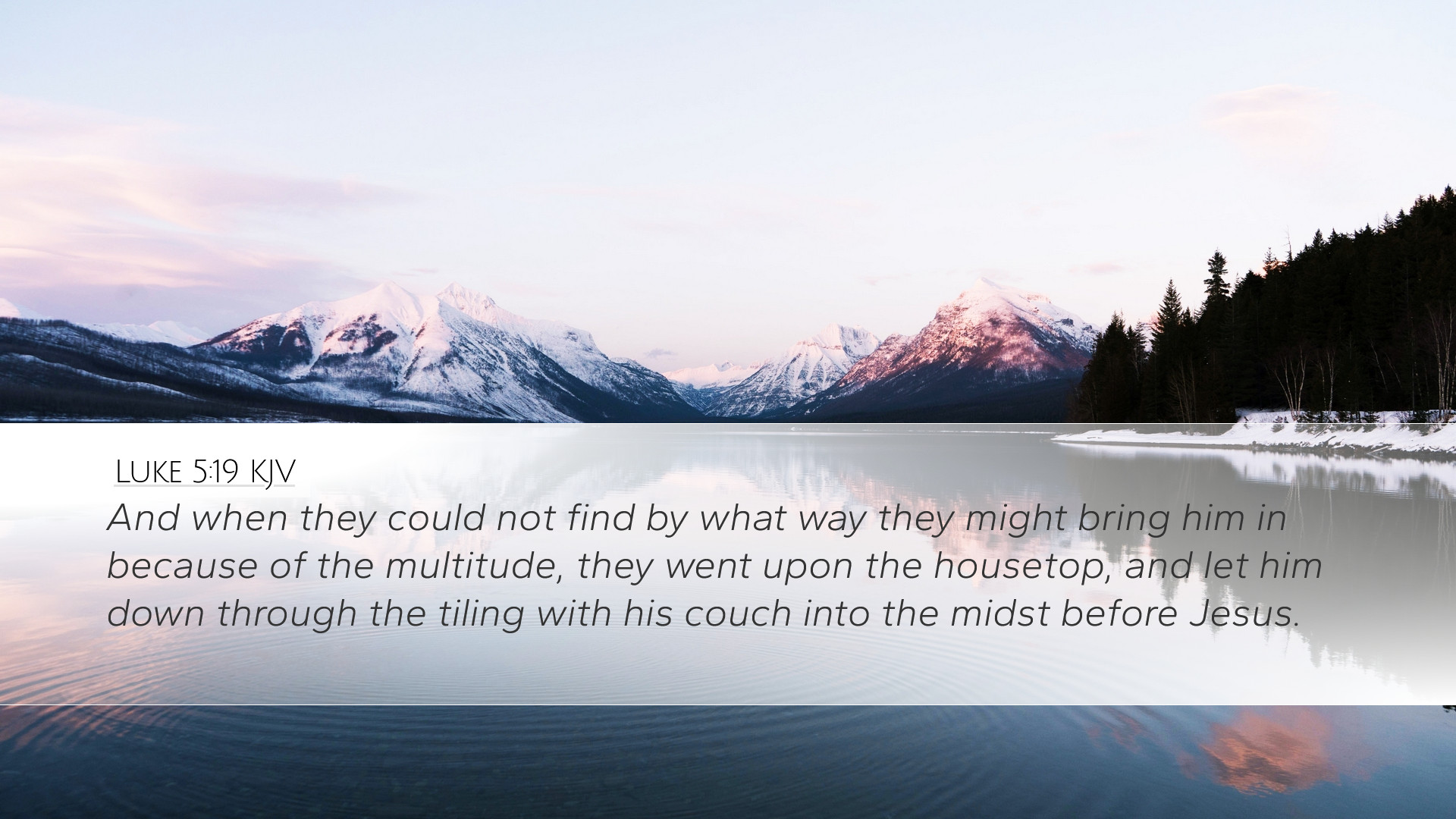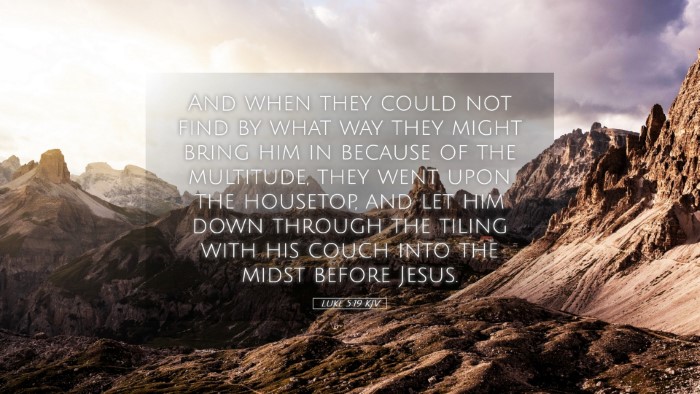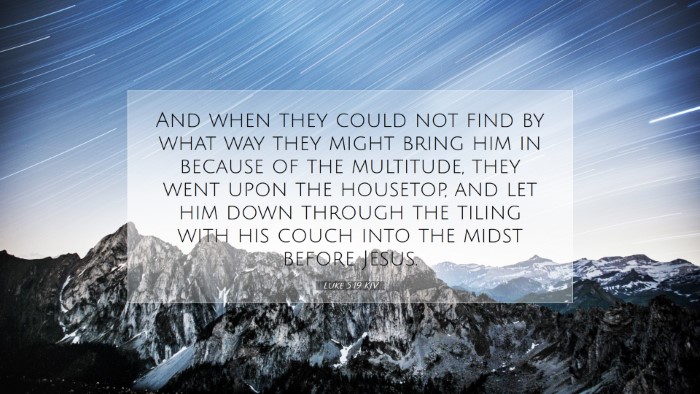Commentary on Luke 5:19
Text of Luke 5:19 (KJV): "And when they could not find by what way they might bring him in because of the multitude, they went upon the house top, and let him down through the tiling with his couch into the midst before Jesus."
Introduction
The narrative found in Luke 5:19 reflects a dramatic moment of faith and determination. The healing of the paralytic, who is lowered through the roof, offers profound lessons for believers. This commentary synthesizes insights from notable public domain theologians, including Matthew Henry, Albert Barnes, and Adam Clarke, to explore the theological implications and practical applications of this verse.
Contextual Background
In the context of Luke 5, we see Jesus establishing His ministry, performing miracles, and teaching with authority. The surrounding verses highlight the growing crowds that followed Him, indicating both the popularity and the curiosity sparked by His works. The crowd in this instance represents obstacles that the faith of the paralytic and his friends would overcome.
Matthew Henry notes that this passage illustrates the faith of those who sought Christ, emphasizing that the faith demonstrated was not solely the paralytic's but also that of his friends. This reflects the communal aspect of faith in Christ.
Faith and Determination
Albert Barnes comments extensively on the determination evident among the friends of the paralytic. Their faith pushed them to take extraordinary measures to bring their companion to Jesus, suggesting that genuine faith is proactive, often requiring effort and perseverance. They did not allow the obstacles posed by the crowd to deter them, highlighting that true faith refuses to see barriers as insurmountable.
This theme resonates deeply with pastoral care: leaders are encouraged to cultivate a faith that is not just personal but communal, actively seeking ways to bring others into the presence of Christ.
Obstacles and Innovations
The crowd's overwhelming presence serves as a metaphor for the challenges believers often encounter in their spiritual journeys. Adam Clarke points out that the physical barrier (the crowd) is emblematic of spiritual barriers that can hinder one's access to Christ. The friends’ solution—entering through the roof—illustrates innovative thinking in the face of difficulties.
This innovation speaks volumes in a contemporary context where believers must often think outside the box to reach out to those in need of salvation and healing. Clarke encourages readers to be creative and clever in their efforts to share the gospel.
The Role of Faith in Healing
Luke 5:19 raises critical theological discussions about the nature of faith and healing. Both Henry and Barnes emphasize that spiritual healing might often precede physical healing, as evidenced by the unique response of Jesus to the paralytic's condition. He first addresses the man's sins before healing him physically, underscoring that spiritual restoration is paramount.
This perspective invites pastors and theologians to reflect on how they approach healing ministries, aligning their practices with the holistic care approach exemplified by Christ—addressing the spiritual, emotional, and physical needs of individuals.
Theological Significance of the Tiling
As the paralytic is lowered through the tiling, Clarke sees this act as symbolic of the way our lives are constructed and the layers that may need to be dismantled for spiritual intervention to occur. The tiling could represent the worldly structures that often obscure our understanding of the divine presence and grace.
This symbol invites introspection among scholars and students alike to consider what tiling may exist in their lives—what cultural or personal barriers may obstruct access to Christ—and challenges them to seek Christ's assistance in ‘breaking through’ these barriers.
Conclusion
The narrative of Luke 5:19 presents a rich tapestry of themes including community faith, determination, innovative solutions to obstacles, and the priority of spiritual healing. Each commentary source provides layers of understanding that can inspire and challenge church leaders, theologians, and believers today.
In summary, the insights derived from the commentaries of Henry, Barnes, and Clarke reveal that effective ministry often requires a combination of faith, creativity, and a commitment to addressing both physical and spiritual needs of those we serve. As we engage with God’s Word, may we be inspired to exhibit the faith of the paralytic’s friends, striving to bring others into the life-giving presence of Christ, overcoming every obstacle in our paths.


